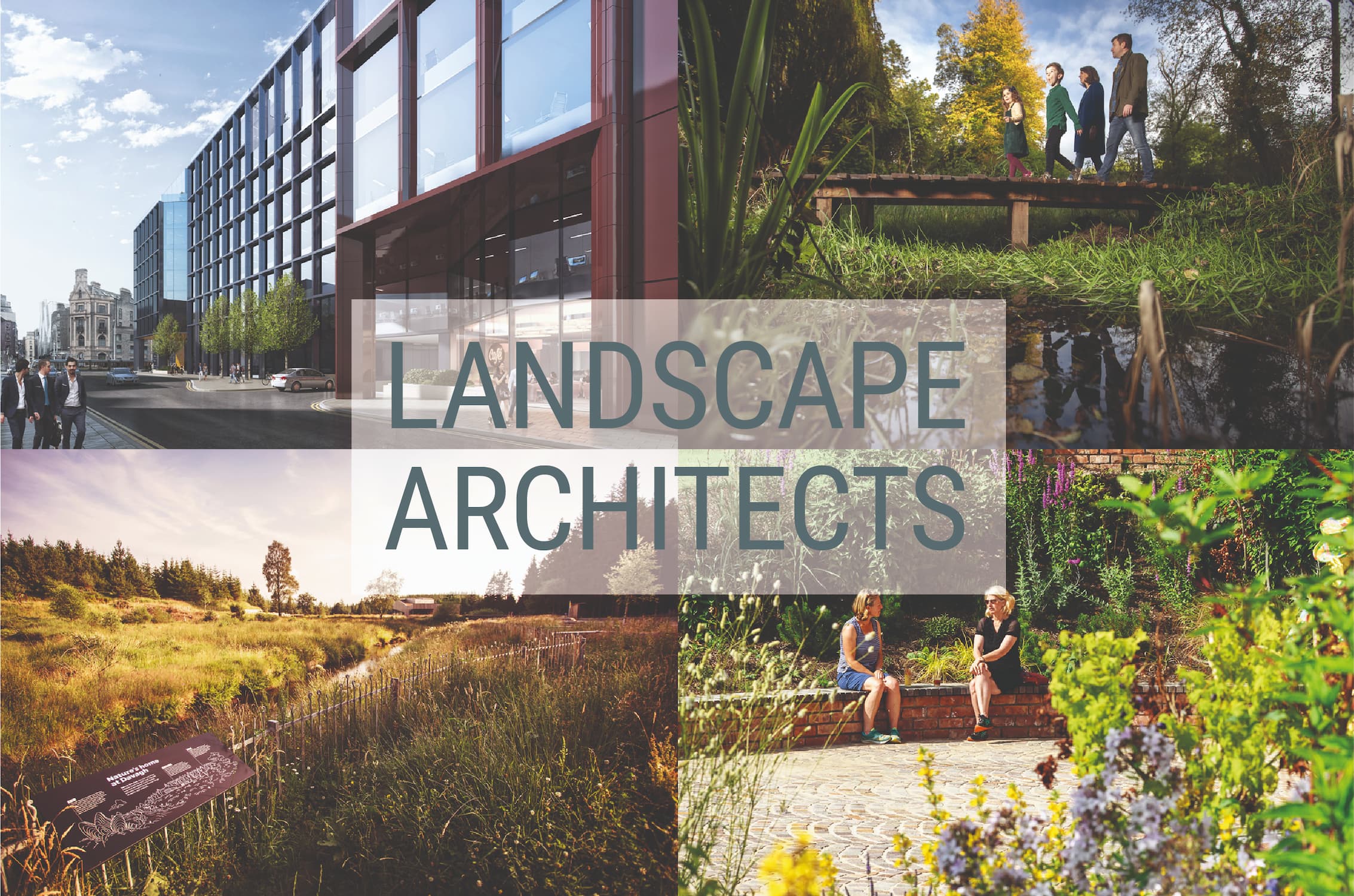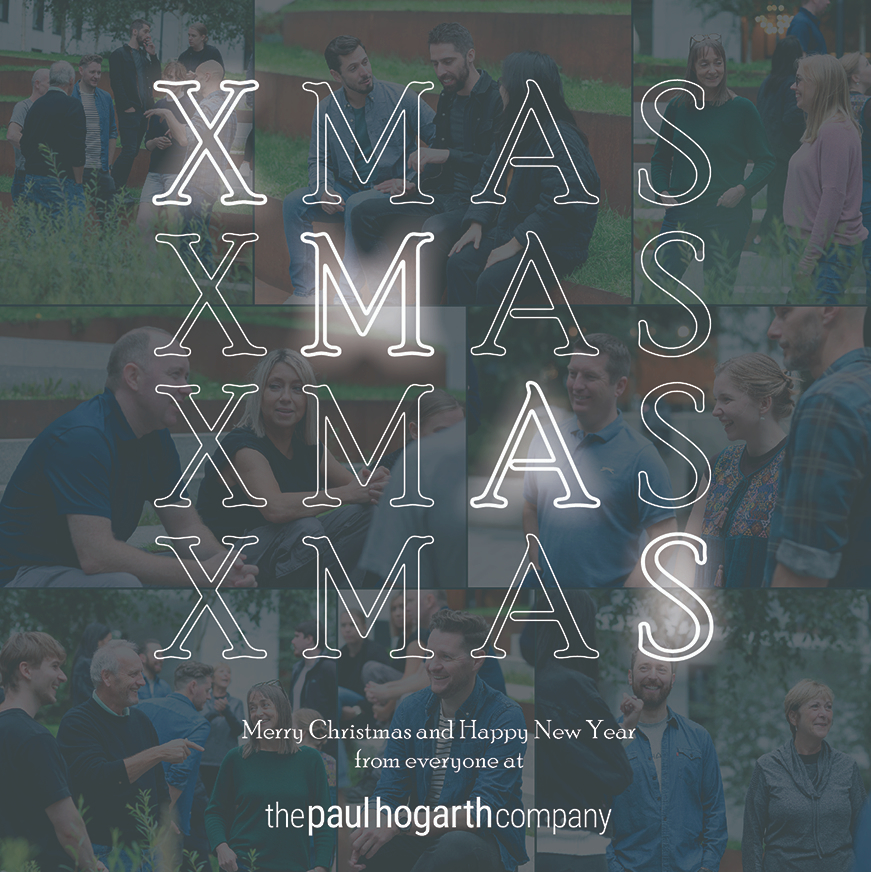Design for Planet was initiated two years ago, as the forum for focus on the design industry as part of COP26, when it was in Glasgow.
This year, the 130 of us who were meeting in-person gathered at the University of East Anglia in Norwich from 16 – 18 October 2023, joined by 6,000 on-line from 93 countries. The University of East Anglia (UEA) is a centre of excellence for environmental research and teaching and was an ideal venue for the discussions, focussing on collaboration. The Enterprise Centre, where we were hosted was an inspiration in itself. Designed by Architype, it has a string of awards to its name and is one of the UK’s most sustainable buildings, incorporating recycled/up-cycled materials and locally sourced straw.
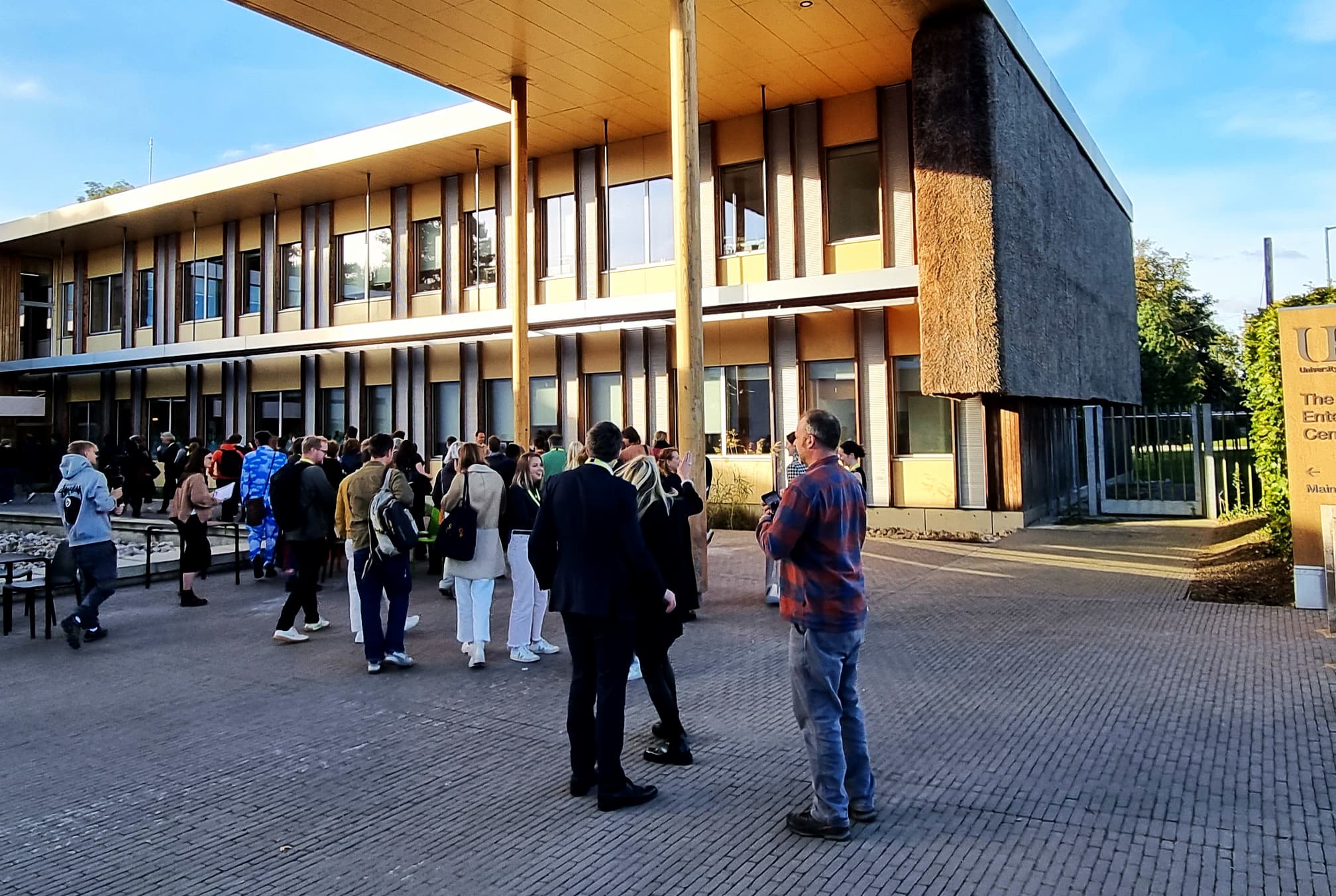
Asher Minns, of the Tyndall Centre for Climate Change Research, based at UEA, was one of our hosts. Asher, with his now famous ‘blue sky’ suit, is central to the communication of information from Tyndall to governments and to the public, including Global Carbon Budgets. This introduction to the data of climate change was set in the context that the bottom threshold of the 1.5◦ temperature rise has already been exceeded!
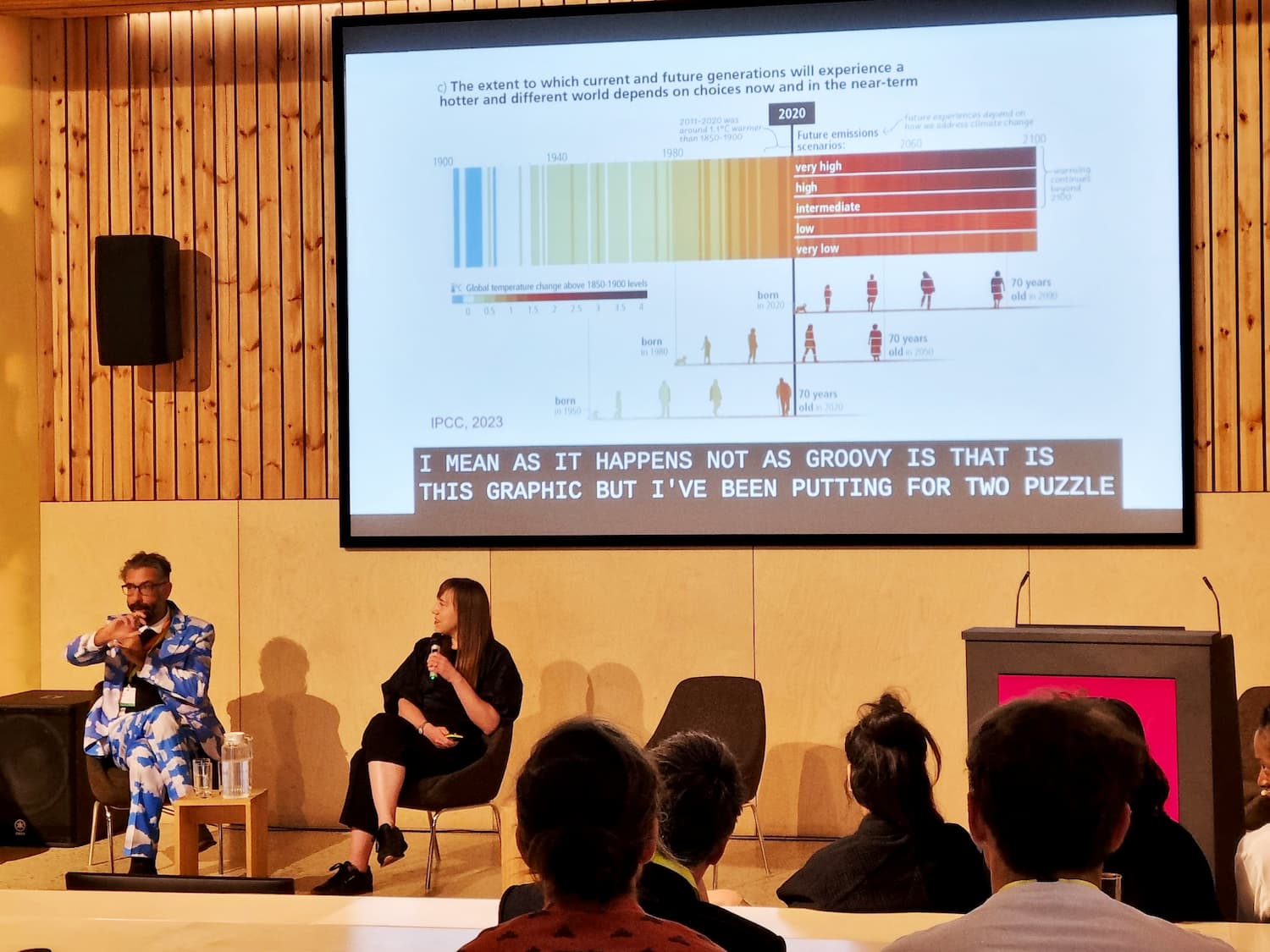
Whilst on the UEA campus, there was an opportunity to explore the Sainsbury’s Centre, a major gallery space, completed in 1978, which was the first cultural building designed by Sir Norman Foster.
Across the three days, there were some outstanding moments that were an inspiration and a challenge, spanning the breadth of design and context. Some of my ‘take homes’ were:
Goldsmith Street – we were given an excellent site visit by the architect, David Mikhail (Mikhail Riches) and the client from Norwich City Council. This project to design and deliver 105 socially rented homes was procured through a competition, won by Mikhail Riches. It was great to see this RIBA Stirling Prize-winning scheme ‘in-person’, particularly as it is featured in the MAG ‘Quality of Residential Space’ document. High density has been achieved by thoughtful cross-sectional designs that ensures daylight to the internal and external spaces. Careful detailing and use of materials conveys a sense of quality, without becoming the focus for anti-social behaviour. And indeed, problematic incidences have reduced significantly from what was there previously. The Passivhaus design means that residents utility bills are greatly reduced. Increased build cost of around 10% have been, in part, offset by increased rents (5% increase), but residents are still paying less overall because of the reduced utility bills.
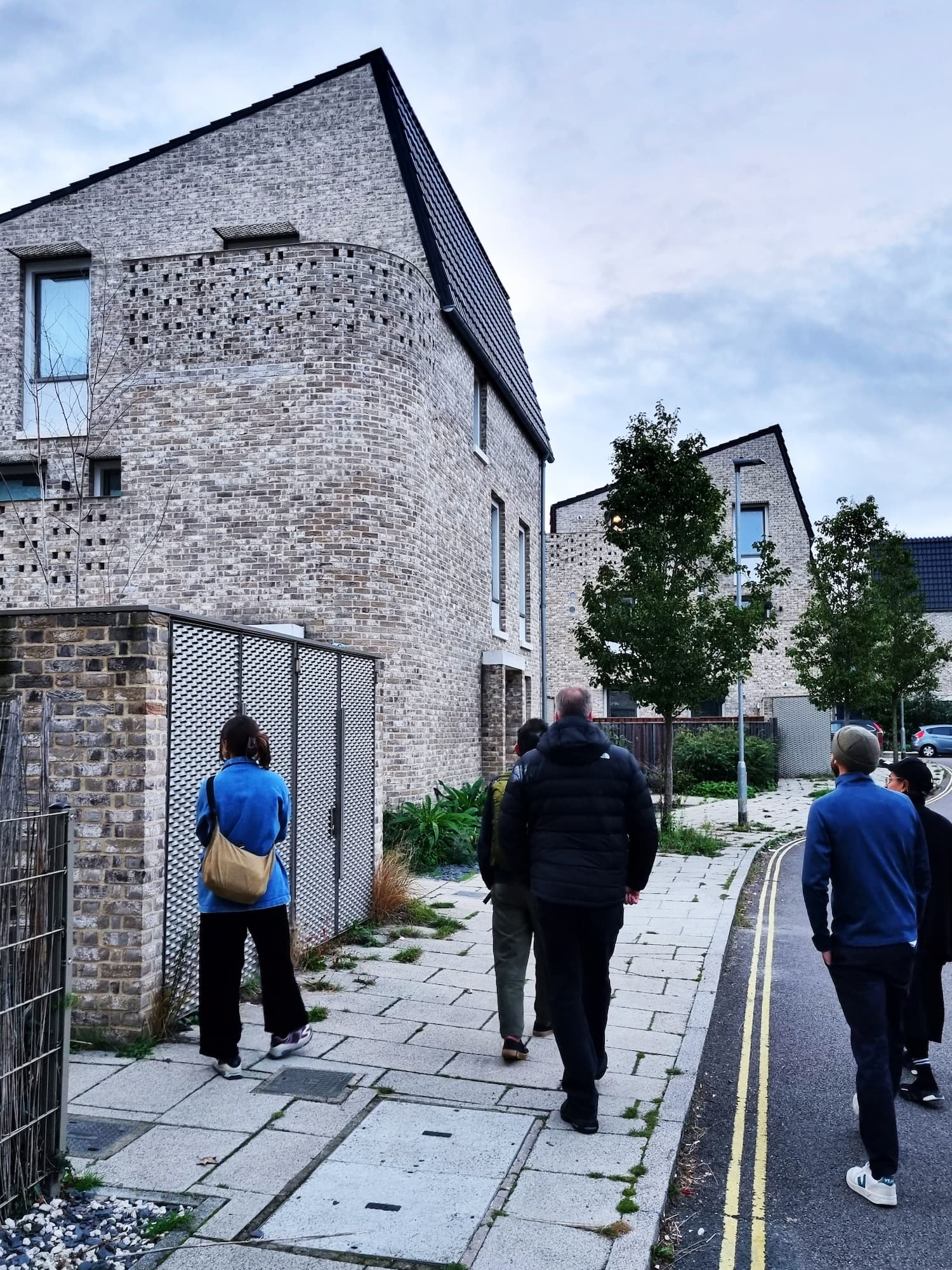
Fairphone – ‘the phone that cares for people and planet’. Bas van Abel, the founder of the company was truly inspiring. Bas started with the anecdote of trying to mend his son’s Nintendo DS and realising that despite being ‘pretty handy’ that he couldn’t, and more to the point, that many products are designed so that they cannot be repaired. His quotation, ‘if you can’t open it, you don’t own it!’ was profound! In the case of phones, they have become so slim that they need to be glued together, rather than screwed and as such are nigh on impossible to repair. From this starting point, Bas developed a smart phone that is intended to be repaired, not thrown into ‘the drawer’ after two years with all the other ones. It is designed to be kept and used for at least twice as long, reducing its impact on the environment by up to 50%. Materials are ethically sourced and ‘at the end of the phone’s life’ it is taken back to re-use most of the materials.
This was a great example of the importance of design, including the built environment, being focussed on making it easy to repair and the importance of ethically/sustainably sourcing component parts. Fairphone have demonstrated that there is strong market demand for such an approach, when well communicated. They started in 2016 and now have a turnover of £45 million!
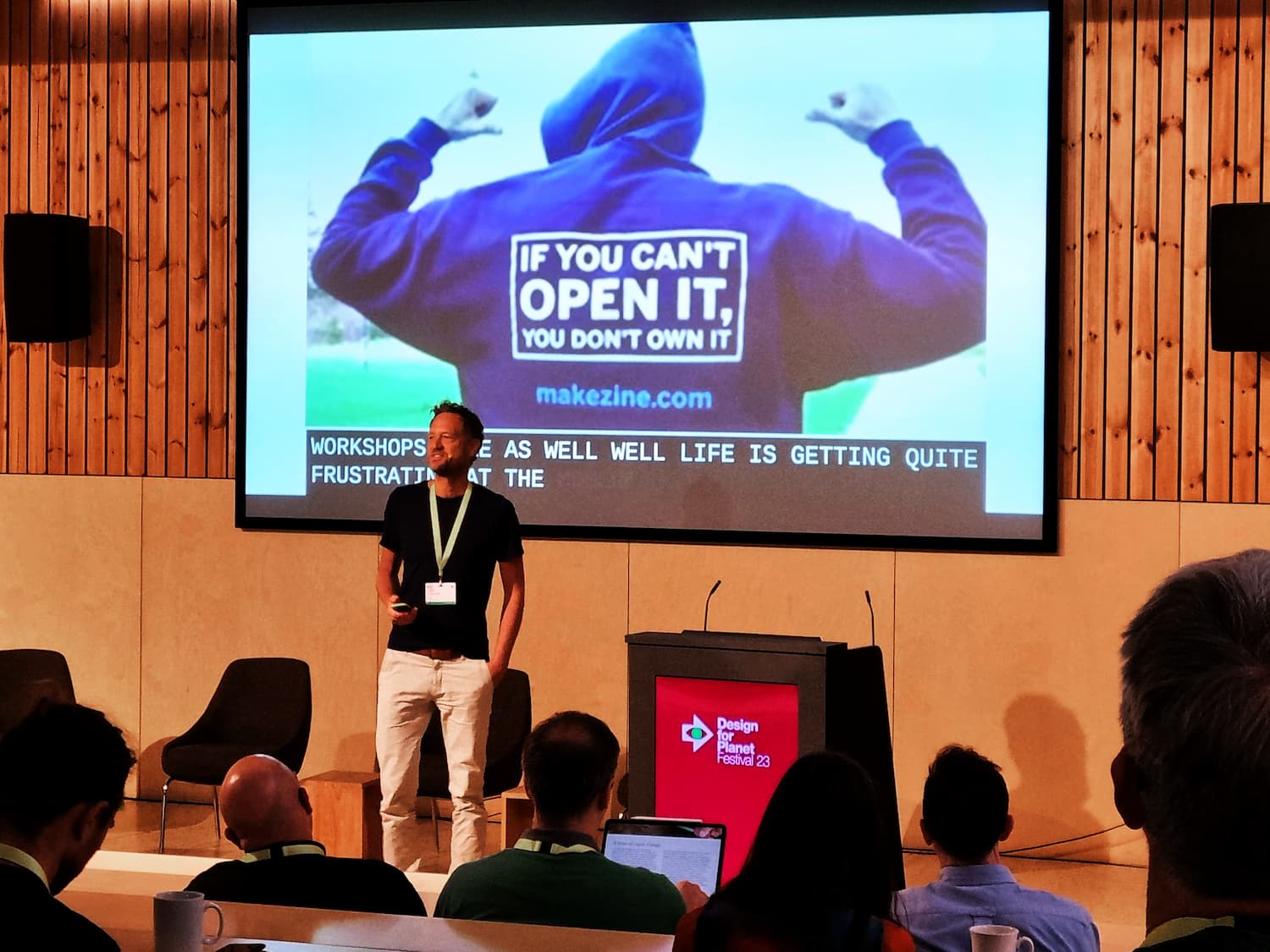
Edward Bulmer of Edward Bulmer Paints was fascinating! As a paint manufacturer, there was an awareness that most products were reliant on petrochemical ingredients, with ‘plastic binders, azo dyes and nasty chemicals’. These inherently have a negative impact on our environment, including micro-plastics that make their way into water courses and oceans. Bulmer Paints have been pioneering ‘gentle chemistry’ replacing the problematic ingredients with plant-based alternatives. Now, the company has a range of commercially available paints that perform well, and which are good for the planet. The ‘takeaway challenge’ was to keep pushing forward with the specification of sustainable ‘things’. For example, we are making headway, with, sustainably sourced timber, but what about coatings, fixings, and the rest?
- Other points for reflection, included:
– Dr Hannah Barham-Brown (Inclusion), spoke brilliantly about issues of accessibility, including the EV Mobility Charter, noting that most charging points are not currently designed in a way that they can be used by people with disabilities.
– Ali Clabbum CEO of Liftshare, outlined the importance of using technology to help communities to share (in this case transport). Since Liftshare started at the time of the launch of the internet, it has saved 1 billion car miles.
– Discussion about the role of AI – there was the salutary observation that, ‘it can help make bad decisions faster’. However it has the power to be incredibly positively, for example, helping analyse issues associated with deforestation in the Amazon.
– Baroness Hayman, Chair of Peers for Planet implored participants to ‘become more efficient stewards of our planet’.
– Eating relative to our seasons and changing climate – there was a fascinating discussion about re-localising food (back to the future) and selecting crops that are appropriate to reduce the impact of transporting produce.
– Building physics – Sarah Wigglesworth’s house at Stock Orchard Street was amazing. It is outstandingly sustainable, but has required new levels of knowledge of materials and how they are integrated, from her, as a designer, but also bringing along others, including Building Control. We also had a visit to Beattie Passive, a local company doing really impressive things in relation to Passivhaus work. This highlighted the challenge of delivering high performance levels, which has led to the ‘tea cosy’ approach of putting a high-performance module over existing houses. The idea of printing the image of the existing property onto the new cover was the focus of much subsequent debate!
– Visa – noted that only 8.6% of transactions are representative of a Circular Economy, but 92% of customers say they want sustainable. There is an appetite, but how do we make it happen?
– Community energy projects were debated, – principles were noted where local generation was linked with profits being retained locally. Putting PVs on vacant properties was something that was being pursued in Norwich. And, the Octopus ‘saving sessions’, were noted as being highly effective in dialling down usage at key times.
Reflecting on this years’ Design for Planet, I was left with the encouragement of some bright, shining examples of good projects and ways of working. But I ‘took away’ an overwhelming sense of the importance of normalising those moments and being able to make progress far faster and at far greater scale. That remains the challenge for us all – from policy makers, to designers and customers/users.
There was a phrase that recurred through the three days, which is, I think, helpful for all of us …. so be ‘stubbornly optimistic’!
Since leaving Norwich, we have had the exciting news that the Design Council with its partners, will be the host of the World Design Congress in London 2025, with the theme of Design for Planet. In the two years before that event, can we all turn ‘stubborn optimism’ into widespread, tangible actions that are making a positive impact relative to Climate Change?
Andrew Haley – Director with The Paul Hogarth Company


